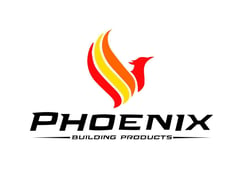What is efflorescence and how can I remove it?
Efflorescence is a crystalline deposit, usually white, that may develop on the surface of the masonry construction shortly after installation.
There are combinations of factors that contribute to the cause of efflorescence.
First there must be soluble salts in the masonry, which in hydrated Portland cement is inevitable due to the chemical reaction between cement or lime and water. This chemical reaction produces calcium hydroxide when brought to the surface by water and combines with carbon dioxide in the air to from calcium carbonate, which then appears as a whitish deposit. This factor we cannot control.
Second, there must be moisture to pick up the soluble salts and carry them to the surface. If the area is exposed to the outside environment then it is safe to say there will be moisture present.
Third, evaporation or hydrostatic pressure must cause the solution to move. As the moisture passes through the masonry it collects the soluble salts bringing them to the surface. The moisture evaporates leaving behind salts or whitish deposit.
Usually efflorescence is more common in the winter when there is a slower rate of evaporation. The moisture stays within the masonry structure longer, collecting the soluble salts. When the moisture finally comes to the surface it carries additional soluble salts resulting in greater whitish deposits.
Now we know what efflorescence is and all masonry has the potential to produce it, what can we do about it?
The design and construction of weather-resistant masonry is key to eliminating recurrent efflorescence. Limit the entry of water and provide for quick exit by giving proper attention to design details such as water stops, flashing, weep holes and copings.
Maintain clean cavities and unobstructed weep holes during the construction of cavity walls.
Waterproof the mortar by purchasing water resistant mortar by purchasing water resistant mortar or add a waterproofing admixture on the job.
In addition to eliminating efflorescence, waterproofing the masonry can eliminate potential stains from bleeding through the masonry, particularly stone. For example, limestone can experience alkali staining. The mechanics of alkali stain are similar to those of efflorescence, but the chemistry is different. Moisture picks up alkali usually from cement products. It moves through the limestone from absorption to evaporation at the surface, where the moisture escapes as vapor, leaving organic matter and alkali salts (brown stains) on and under the surface. Water proofing the mortar of cement will eliminate moisture from moving through the cement preventing the alkali stains from surfacing.


For additional information on this subject please














